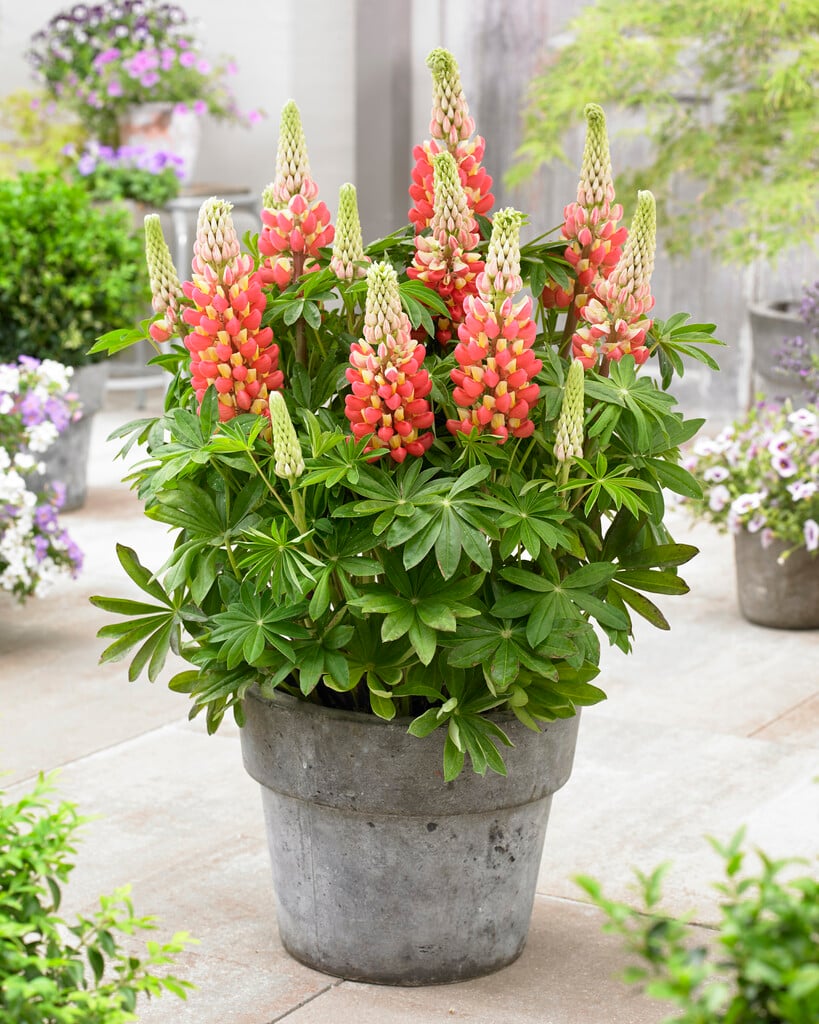Size
Ultimate height
0.5–1 metresTime to ultimate height
1–2 yearsUltimate spread
0.5–1 metresGrowing conditions
Moisture
Well–drainedpH
Acid, NeutralColour & scent
| Stem | Flower | Foliage | Fruit | |
| Spring | Green | |||
|---|---|---|---|---|
| Summer | Red Yellow | Green | ||
| Autumn | ||||
| Winter |
Position
- Full sun
- Partial shade
Aspect
East–facing or South–facing or West–facing
Exposure
Exposed or Sheltered Hardiness
H5Botanical details
- Family
- Fabaceae
- Native to GB / Ireland
- No
- Foliage
- Deciduous
- Habit
- Bushy, Columnar upright
- Potentially harmful
- Harmful if eaten. Wear gloves and other protective equipment when handling. TOXIC to pets if eaten (dogs, cats, rabbits, tortoises) - see the HTA guide to potentially harmful plants for further information and useful contact numbers
- Genus
Lupinus can be annuals, perennials or shrubs, with palmate leaves and showy terminal racemes of pea-like flowers
- Name status
Accepted
How to grow
Cultivation
Grow in moderately fertile, light and well-drained soil in full sun or light, dappled shade. See lupin cultivation This plant was included in the RHS Lupinus (lupin) trial 2024-2025 https://www.rhs.org.uk/plants/trials-awards/plant-trial-results/lupinus
Propagation
Propagate from basal softwood cuttings in mid spring. As this plant is protected by Plant Breeders' Rights, any propagation should be for personal rather than commercial use
Suggested planting locations and garden types
- Coastal
- Cottage and informal garden
- Banks and slopes
- Cut flowers
- Flower borders and beds
Pruning
Deadhead to encourage a second flush of flowers. As lupins can be short-lived for perennials, some may be left to seed as replacements, though plants grown from seed may be variable
Pests
May be susceptible to lupin aphid, slugs and snails
Diseases
May be susceptible to powdery mildews, lupin anthracnose and virus diseases, and to fungal and bacterial rot particularly in damp conditions
Get involved
The Royal Horticultural Society is the UK’s leading gardening charity. We aim to enrich everyone’s life through plants, and make the UK a greener and more beautiful place.
